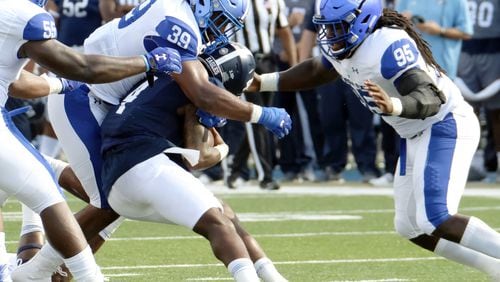I have had the privilege of serving as the commissioner of three different intercollegiate athletics leagues for the past 27 years.
Over those years, intercollegiate athletics has changed dramatically. We’ve come a long way from the the 1970s, when NCAA members voted to eliminate the $15 monthly laundry stipend student-athletes once received in an effort to cut costs.
Criticism of the amateur collegiate model is not a new phenomenon, but as the level of revenue in college sports has reached new heights in recent years, critics and plaintiffs lawyers have ramped up their efforts to dismantle the system. What the critics fail to realize is more has been done to benefit college students who play sports in the past five years than was done in the previous 25 years.
If you add up all the benefits student-athletes are eligible to receive these days, it’s quite a lot of money. A USA Today analysis determined that the typical Division I men’s basketball player receives $120,000 annually in scholarship aid, goods, services and future earnings. The figure does not include the recently passed cost of attendance stipend, which provides many students an additional $2,000-$5,000 annually to cover day-to-day living expenses.
Despite how much help student-athletes receive, there has also been an increasing number of critics who demand that students be paid salaries for playing sports.
There is one problem I have with paying students. They’re not employees. They’re students. To me, it’s that simple.
Economically, every pay-for-play model I’ve seen is deeply problematic. Our critics seem to think moving to a professional sports model is an easy decision to make. What they fail to realize is how many bad decisions athletic directors would be forced to make if students received salaries for playing sports.
Much of the progress we’ve made in achieving gender equity and increasing benefits for all athletes would be in jeopardy, a reality some critics either don’t understand or don’t care about.
I often hear athletic directors say the toughest conversation they will ever have outside calling a parent of one of his or her students to deliver tragic news is walking into a locker room to tell a group of athletes their sport is being eliminated. That is the reality many colleges would face for some sports, such as tennis, swimming, softball, or track and field, if schools were forced to pay football and basketball players. Schools don’t have unlimited budgets.
The idea of preserving the current model may seem quaint to our critics, but it isn’t to most current college athletes. They come to college on scholarship to pursue their dream of earning a degree while playing the sport they love. They leave college well-equipped for successful careers and quality lives.
The economic impact of allowing student-athletes to form unions and become paid employees is only one drawback to proposals being pitched to professionalize college sports.
The fundamental values of college sports would also be at risk. The current model of college athletics was built on the Ivy League model of sports, in which students of both genders across a diverse range of sports earn an opportunity to compete.
Fairness is built into the system. Unlike professional sports, in college, star athletes and reserves who seldom play are treated the same. They earn the same benefits and get the same opportunity to find their role on their team.
The proposals to provide salary caps and signing bonuses under a tiered system of compensation, which would award some students more than others and favor the major sports over Olympic sports, flies in the face of the essence of college sports. Critics may not care that such a reckless move would put some sports programs on the chopping block. They may not be aware of how a tiered pay-for-play system could also undermine the team dynamic of our major sports.
Creating a locker room where players are valued based on how much money they make instead of how much they contribute to their team would change sports like football and basketball forever. As someone who has been a steward of college athletics for nearly three decades, I believe it would change it for the worse.
Colleges large and small typically have from 300 to 500 students who compete. If we are to preserve all that is good in a system that may not be perfect, all of them need to be treated the same. They should be provided the same benefits both in terms of academic and athletic support.
If we are good stewards of the game, we should continue to maintain the current model but enact reforms when needed. That is what we have done the past several years by paying college athletes a stipend to cover their out-of-pocket expenses, giving them more time to pursue other interests and changing the rules to allow unlimited paid-for meals, among other reforms.
If there is one criticism that needs to be corrected, it is that we have not done a good enough job telling our story about the inherent value of college athletics. Our students who play sports leave college with skills, experiences and memories that put them in position to have successful careers and meaningful lives – and unlike most of their fellow students who are not athletes, without thousands of dollars of debt due to the scholarships they receive to play the sports they love.
That is one lasting value of college athletics we can all agree on.
About the Author






